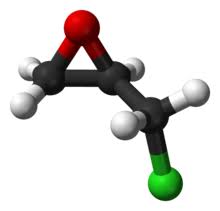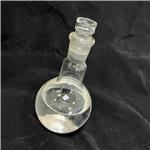General Properties of Epichlorohydrin
Nov 8,2019
Epichlorohydrin (abbreviated ECH) is an organochlorine compound and an epoxide. Despite its name, it is not a halohydrin. It is a colorless liquid with a pungent, garlic-like odor, moderately soluble in water, but miscible with most polar organic solvents. It is a chiral molecule generally existing as a racemic mixture of right-handed and left-handed enantiomers. Epichlorohydrin is a highly reactive electrophilic compound and is used in the production of glycerol, plastics, epoxy glues and resins, and elastomers.

Uses
Epichlorohydrin (ECH or EPI) is a highly reactive chemical intermediate.In its pure form, it is a clear, colorless liquid. The presence of both an epoxide ring and a chlorine atom in the molecule allows epichlorohydrin to readily undergo a variety of chemical reactions with many types of compounds.This versatility earns its wide use as a chemical intermediate.
Toxcity
Epichlorohydrin is flammable and considered as a hazardous chemicalIf released into the environment, however, it biodegrades rapidlyDirect, prolonged contact with pure Epichlorohydrin as liquid can severely damage the skin and eyes. Vapors may also produce eye irritation and damage to cornea of the eye.
Epichlorohydrin is a probable carcinogen, a poison that can cause death at higher exposures, a mutagen and a skin sensitizer.Occupational exposures are possible; however, consumer exposures are not likely because end-use products are expected to contain only trace levels of Epichlorohydrin.
Industrial Production
Industrial operations use Epichlorohydrin in closed systems and are designed with engineering controls to minimize personnel and environmental exposures.
The primary process for producing Epichlorohydrin consists of three steps:
1. Chlorination of propylene to form allyl chloride
2. Reaction of the allyl chloride with hypochlorous acid to produce glycerol dichlorohydrin
3. Reaction of the glycerol dichlorohydrin isomers with sodium hydroxide or calcium hydroxide to produce Epichlorohydrin.
Epichlorohydrin is produced out of propylene or natural glycerin. The new processes developped to use glycerin offer the advantage to be more energy efficient and to operate with a natural renewable feedstock. Approximately 76% of the world’s consumption of (EPI) is used to make epoxy resins.
- Related articles
- Related Qustion
- Is epichlorohydrin added in the production of tea bags? Will it be ingested by the human body? Feb 24, 2025
Epichlorohydrin can be used in the production of tea bag paper to keep the tea bags from falling apart, this article will discuss its daily intake.
- Synthesis and Uses of Epichlorohydrin Jun 1, 2022
Epichlorohydrin (ECH) is an important organic chemical raw material and petrochemical intermediate, mainly used to produce epoxy resin, synthetic glycerin and chlorohydrin rubber.
- The Application of Epichlorohydrin Oct 19, 2021
Epichlorohydrin is manufactured from allyl chloride and is widely used as a chemical intermediate. A major use is in the synthesis of bisphenol A diglycidyl ether, which is a component of epoxy resins.
Butylchlorodihydroxytin is an important Tin-based catalyst to synthetize polymers and organotin substituted products.....
Nov 8,2019Catalyst and Auxiliary4-Hydroxy-2,2,6,6-tetramethyl-piperidinooxy is a heterocyclic compound, which is a 4-substituted 2,2,6,6-tetramethylpiperidyl-1-oxy (TEMPO) derivative. Like the related TEMPO, it is used as a catalyst and chemical oxidant.....
Nov 8,2019Catalyst and AuxiliaryEpichlorohydrin
106-89-8You may like
- Epichlorohydrin
-

- $80.00 / 25kg
- 2025-08-05
- CAS:106-89-8
- Min. Order: 1000kg
- Purity: 0.995
- Supply Ability: 50000MT per year
- epichlorohydrin
-

- $63.00 / 25KG
- 2025-07-07
- CAS:106-89-8
- Min. Order: 25KG
- Purity: 99.99%
- Supply Ability: 200ton
- Epichlorohydrin
-

- $1.00 / 25KG
- 2025-06-24
- CAS:106-89-8
- Min. Order: 1KG
- Purity: 99%
- Supply Ability: 10 mt






